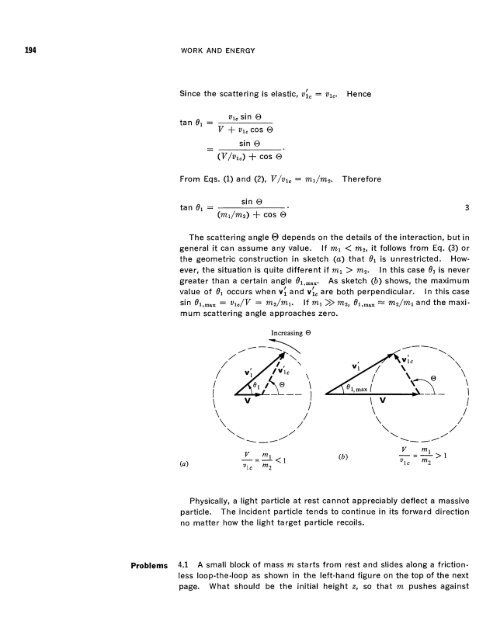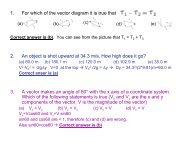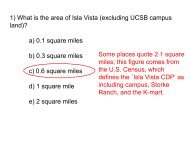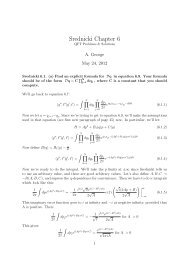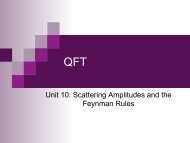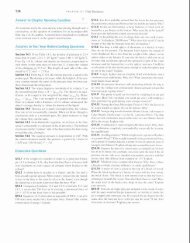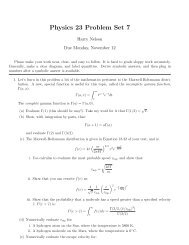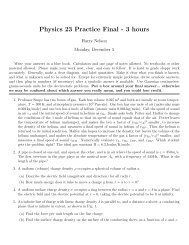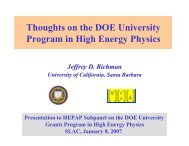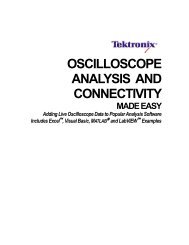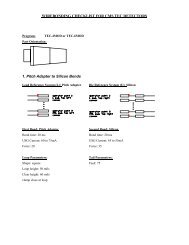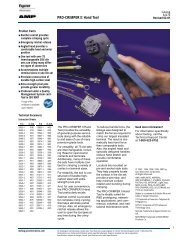Chapter 4 - UCSB HEP
Chapter 4 - UCSB HEP
Chapter 4 - UCSB HEP
You also want an ePaper? Increase the reach of your titles
YUMPU automatically turns print PDFs into web optimized ePapers that Google loves.
WORK AND ENERGY<br />
Since the scattering is elastic, v:, = Vrc.<br />
Hence<br />
vlo sin O<br />
tan O1 =<br />
v + V l, cos @<br />
=<br />
sin 8<br />
(V/hc> + cos o<br />
From Eqs. (I) and (21, V/el, = ml/mn. Therefore<br />
sin 8<br />
tan el =<br />
(ml/mz) + cos o<br />
The scattering angle @ depends on the details of the interaction, but in<br />
generat it can assume any value. If ml < mp, it follows from Eq. (3) or<br />
the geometric construction in sketch (a) that O1 is unrestricted. However,<br />
the situation is quite different if ml > mn. In this case 8, is never<br />
greater than a certain angle el,,,,. As sketch (b) shows, the maximum<br />
value of 6, occurs when r: and vi, are both perpendicular. In this case<br />
sin OI, = VI,/~ = mz/ml. If ml >> mt, 81,max = wn/ml and the maximum<br />
scattering angle approaches zero.<br />
Increasing Q<br />
I<br />
\ / 1<br />
\<br />
\ / /<br />
\<br />
\ /' '.<br />
\--A'<br />
\<br />
\<br />
I<br />
I<br />
/<br />
.--'<br />
0 /'<br />
Physically, a light particle at rest cannot appreciably deflect a massive<br />
particle. The incident particle tends to continue in its forward direction<br />
no matter how the light target particle recoils.<br />
Problems 4.1 Asmall blockof rnassmstartsfrom rest and slidesalonga frictionless<br />
loop-the-loop as shown in the left-hand figure on the top of the next<br />
page. What should be the initial height z, so that m pushes against


